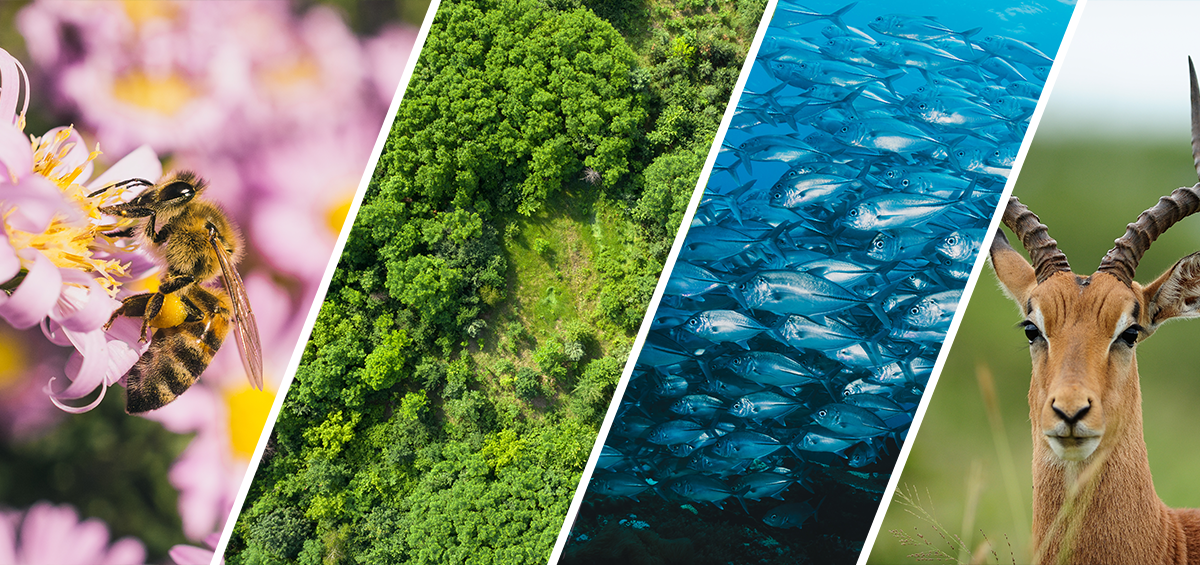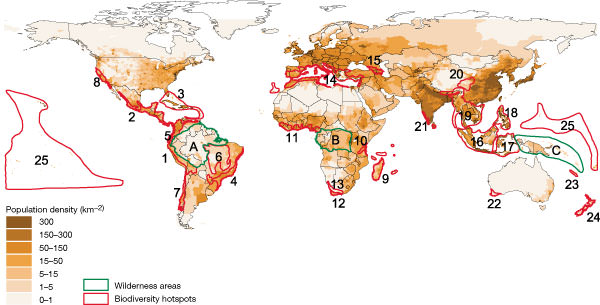Biodiversity plays an important role in the way ecosystems function and in the many services they provide, including nutrients and water cycling, soil formation and retention, resistance against invasive species, pollination of plants, regulation of climate, as well as pest and pollution control by ecosystems.
Biodiversity plays a crucial role in human nutrition through its influence on world food production, as it ensures the sustainable productivity of soils and provides the genetic resources for all crops, livestock, and marine species harvested for food.
There is growing concern about the health consequences of biodiversity loss and change. Biodiversity loss can have significant direct human health impacts if ecosystem services are no longer adequate to meet social needs. Indirectly, changes in ecosystem services affect livelihoods, income, local migration and, on occasion, may even cause political conflict.
Intensified and enhanced food production through irrigation, use of fertilizer, plant protection (pesticides) or the introduction of crop varieties and cropping patterns affect biodiversity, and thus impact global nutritional status and human health. Habitat simplification, species loss and species succession often enhance communities vulnerabilities as a function of environmental receptivity to ill health.
The main cause of the loss of biodiversity can be attributed to the influence of human beings on the world’s ecosystem. In fact, human beings have deeply altered the environment and have modified the territory, exploiting the species directly. For example by fishing and hunting, changing the biogeochemical cycles and transferring species from one area to another.
The threats to biodiversity can be summarized in the following main points:
- Alteration and loss of the habitats: the transformation of the natural areas determines not only the loss of the vegetable species, but also a decrease in the animal species associated with them
- Introduction of exotic species and genetically modified organisms: species originating from a particular area, introduced into new natural environments can lead to different forms of imbalance in the ecological equilibrium
- Pollution: human activity influences the natural environment producing negative, direct or indirect, effects that alter the flow of energy, the chemical and physical constitution of the environment and abundance of the species
- Climate change: for example, heating of the Earth’s surface affects biodiversity because it endangers all the species that adapted to the cold due to the latitude (the Polar species) or the altitude (mountain species)
- Overexploitation of resources: when the activities connected with capturing and harvesting (hunting, fishing, farming) a renewable natural resource in a particular area is excessively intense, the resource itself may become exhausted, for example, is the case of sardines, herrings, cod, tuna and many other species that man captures without leaving enough time for the organisms to reproduce
The loss of biodiversity is increasingly threatening the Earth’s ability to provide humans with things like food, water, fertile soils, and protection from pests and disease, according to a 20-year review.
Top 25 biodiversity hot spots: rich in biodiversity and under threat from human impacts Hotspots: (1) Tropical Andes; (2) Mesoamerica; (3) Caribbean; (4) Atlantic Forest Region; (5) Chocó-Darién-Western Ecuador; (6) Brazilian Cerrado; (7) Central Chile; (8) California Floristic Province; (9) Madagascar; (10) Eastern Arc Mountains and Coastal Forests of Tanzania and Kenya; (11) West African Forests; (12) Cape Floristic Region; (13) Succulent Karoo; (14) Mediterranean Basin; (15) Caucasus; (16) Sundaland; (17) Wallacea; (18) Philippines; (19) Indo-Burma; (20) Mountains of South-Central China; (21) Western Ghats and Sri Lanka; (22) Southwest Australia; (23) New Caledonia; (24) New Zealand; and (25) Polynesia and Micronesia. Major tropical wilderness areas: (A) Upper Amazonia and Guyana Shield; (B) Congo River Basin; and (C) New Guinea and Melanesian Islands.
Currently, people are becoming more aware of the effects of biodiversity loss and taking precautions. More organizations are working on new ways to lower biodiversity loss more effectively. To reduce loss there are some possible approaches: reduction of deforestation, reduction of agricultural expansion and using of renewable energy systems. There are several important ways in which humans can slow biodiversity loss, although there is no way to bring back the species that have already gone extinct.
Protecting areas – Creating protected areas where human activity is limited is the best way to prevent deforestation and exploitation of organisms and the resources they need to survive.
Preventing species introductions – This is the case with invasive species, which can wreak havoc when introduced to ecosystems that aren’t prepared to deal with them.
Informing / Educating – Education is a powerful tool, and the more people know about biodiversity loss, the more they will be prepared to help slow it.
Slowing climate change – Climate change is the documented cause of several extinctions that we know about, and has likely caused hundreds of species to go extinct about which we may never know. Any efforts as individuals, organizations, or governments, to slow current human-caused global warming is a step towards slowing biodiversity loss.
Promoting sustainability – Sustainable farming is much better for the environment than grazing and cropping that rely on clearing swathes of forest or field.






